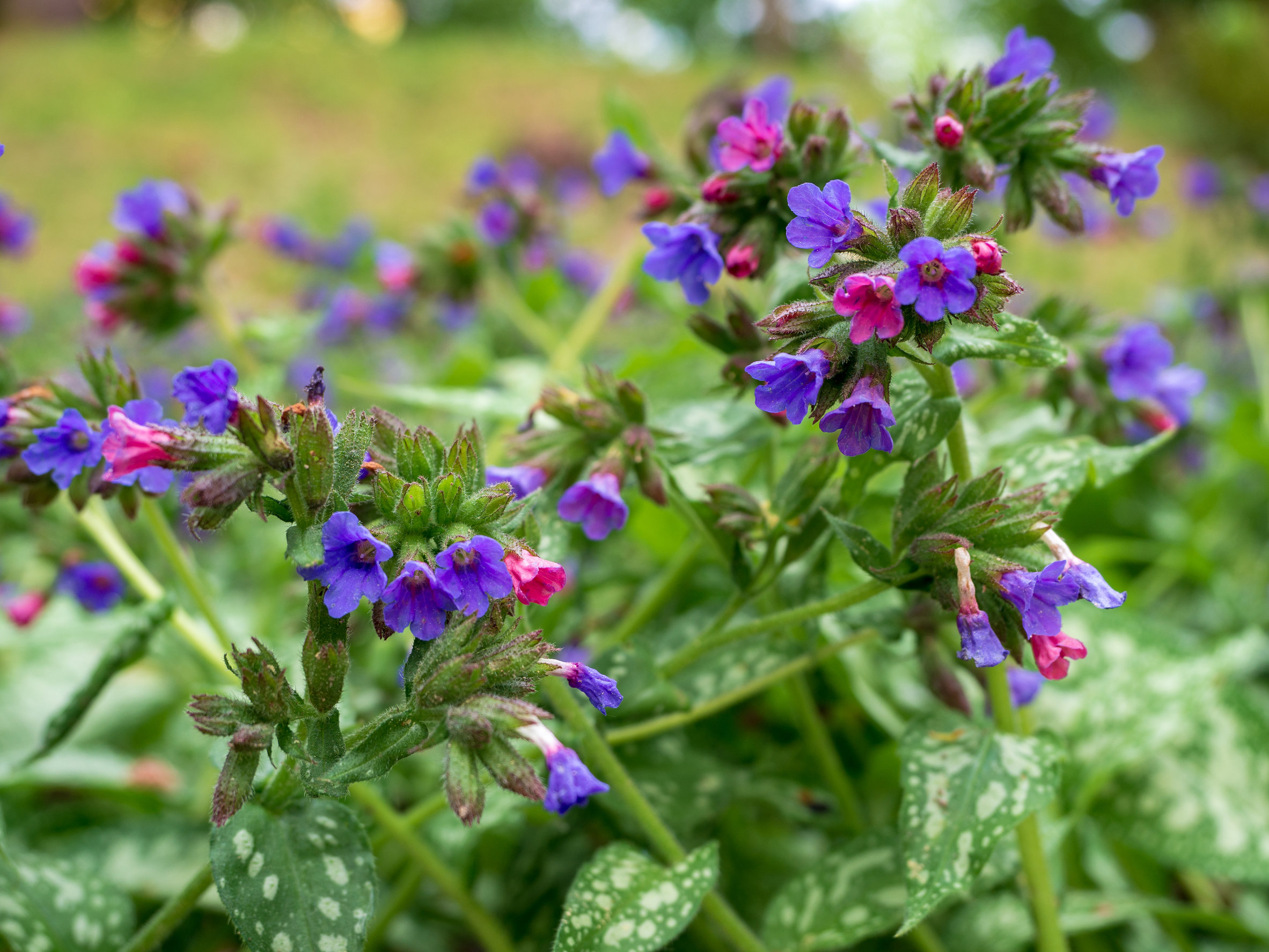Lungwort - Pulmonaria officinalis

Common Names: Lungwort, common lungwort, Mary's tears, Our Lady's milk drops, Herbe Cardiaque, Herbe au Lait de Notre-Dame, Lungenkraut, Pulmonaire, Pulmonaria, Pulmonariae herba, Sauge de Bethléem, Pulmonaria officinalis
Latin Name: Pulmonaria officinalis
Origin: Europe
Short Introduction
The medicinal part of lungwort is the herb or lower leaves, harvested during flowering from March to April. The plant material is dried in the shade at temperatures up to 40°C and stored in sealed containers. Lungwort can grow in virtually any soil type, from light to rocky. It is equally tolerant of various pH levels, from alkaline and neutral to acidic. While the plant prefers moist soils, it can also tolerate drier sites.
Detailed Description
Lungwort is a trusted folk remedy for respiratory tract infections, as its name suggests.
Botanical Information
Lungwort is an herbaceous plant featuring green, heart-shaped, elongated, and hairy basal leaves with rounded edges. In early spring, it produces flowers that transition from red to pink and then to bluish hues, each with five petals. These flowers contain anthocyanins, compounds that cause their color to change in response to pH levels. Lungwort typically blooms from March to May and sets fruit from May to June. The plant is pollinated by insects, mainly bees and butterflies, and its seeds are also dispersed by insects, including ants.
Origin and Distribution
Lungwort is native to Europe, where it is most widespread—from the Ardennes west to the Netherlands, Denmark, Sweden, and the United Kingdom. It is not found in Norway. Eastward, it extends into central Russia and the Caucasus, and it also grows wild in the Balkans and northern or central Italy.
This herb appears in deciduous or mixed forests from lowlands to higher mountain regions. Lungwort prefers fresh sites with sufficient shade and rich, calcareous soil, but it can also be found in stony or pure clay soils, anywhere from sea level up to 1500 meters elevation.
Usage / Dosage
Lungwort received its name due to its use for lung ailments and its spotted leaves, which resemble lung tissue. Young leaves are used in English cuisine, added to salads or soups. Lungwort continues to be used today in homeopathy and traditional folk medicine.
The benefits of lungwort are attributed to its saponin content, which supports and facilitates expectoration; mucilaginous substances that provide protection and soothe the respiratory passages; and tannins that confer anti-inflammatory and antiseptic effects. Some herbalists still recommend lungwort as an adjunct to standard tuberculosis treatment today.
Traditional Folk Medicine
In folk medicine, lungwort decoctions are administered for bronchitis, to heal and regenerate the lining of both upper and lower respiratory tracts, and for digestive tract support. Lungwort also exhibits diuretic and astringent (tightening) effects.
Folk traditions use compresses made from fresh lungwort, infusions, or strong decoctions for washing purulent wounds and hemorrhoids, utilizing the plant’s anti-inflammatory and astringent effects. Lungwort is also prescribed for conditions involving fluid retention.
In the Anglo-Saxon tradition, lungwort is used for digestive troubles, intestinal disorders, kidney diseases, and urinary tract issues. Due to the hairy nature of its leaves, it is rarely consumed on its own. Lungwort is also one of the herbal ingredients found in vermouth.
Precautions and Limitations
Lungwort contains alkaloids and should not be used for longer than 3 weeks. The herb should not be given to young children, pregnant women, or nursing mothers.
Active Compounds
Lungwort contains silicic acid, saponins, tannins (up to 10%), mucilaginous substances, pyrrolizidine alkaloids, flavonoids, organic acids (including stearic and myristic acids), sugars, vitamin C, phytosterols, allantoin, and mineral salts (primarily calcium salts).
Traditional Dosage
Recommended dosages depend on the indication and form. A 1:5 tincture is taken in amounts of 1–5 ml, 1–3 times daily. To prepare tea, mix 5–10 g of dried herb (1–2 tablespoons) with one glass of water and drink 1–3 times a day.
